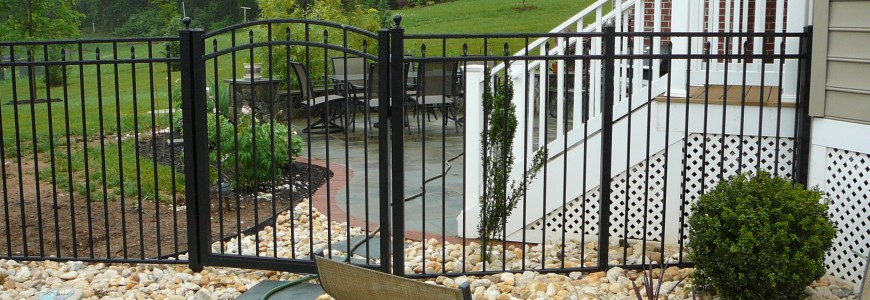Depending upon the type of materials used or their age, sometimes a homeowner needs to replace a fence. Wood fences, in particular, can last a long time; yet unlike vinyl or aluminum, wood fences may eventually require replacement after decades’ worth of service.In some cases, there’s a need to replace a fence when it’s not properly installed or inferior materials are used to build the original fence.
Sometimes there’s also a need to replace a fence due to weather activity—in recent years we’ve seen some fences get destroyed by high winds during thunderstorms or when hurricanes pass through.
But no matter the situation, when it’s time to replace a fence, there are some important things to think about:
Property Considerations Before You Replace a Fence
Check Your Local Zoning Laws
Perhaps the most important thing to consider before replacing a fence is to check your local zoning laws to see if you need a permit to replace an existing fence. Even if you plan to use the same materials and replace the fence with the exact same height; you may still need to get a permit prior to installation. The biggest mistake homeowners often make is replacing a fence without checking their local jurisdiction and end up spending a fortune in fees due to incorrect assumptions. The same is true for those homeowners who need to adhere to guidelines from their local Homeowner’s Association (HOA)—always look at your guidelines to see if you need to get written approval before replacing a fence.
When you replace a fence, it’s also a good time to see if the existing fence is set on your property line. Sometimes a fence gets installed that falls short of your property line so a good time to correct that is when you install a replacement fence. Likewise, if you find out that your current fence goes beyond your property line, a good time to rectify that situation is when you get a new fence installed.
Call Utilities Before You Replace a Fence
Even though you plan to replace a fence in the exact same spot as before, always call Miss Utility before you dig! You never want to run the risk of hitting pipes or wires underground, even if your fence posts will go in the exact same area as before. We’ve seen homeowners who are not the original owners make this mistake several times—they attempt to replace a fence on their own and run into big problems when they dig a new post hole that goes a few inches deeper than the original ones. Trust me, this is a problem you don’t want to have!
Purchasing Considerations Before You Replace a Fence
Material Considerations
When there’s a need to replace a fence, we encourage you to look at the materials of your original fence, especially if you need to replace a wood fence due to rotting. Make sure you find out the type of wood used. As we’ve said before, not all grades and types of wood are created equal. If your goal is to replace your fence just once and never have to worry about it again, you may want to explore a higher grade of material such as ornamental aluminum.
Think Long Term When You Replace a Fence
When you need to replace a fence, it’s a good time to ask why you need the replacement fence in the first place. Sometimes when you buy a home with an existing fence, the original homeowner had a set of needs that may not match your present ones. For example, if you need to replace a three-foot tall picket fence and you now plan to have children and pets, you may want to replace that fence with something taller and a bit sturdier to protect your children and keep your animals safe inside your yard. Likewise, if you plan to install a pool in the yard, you may need to change where the fence goes based on local pool code.

